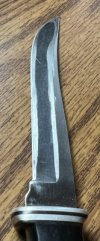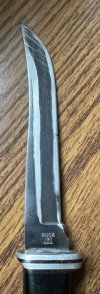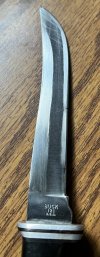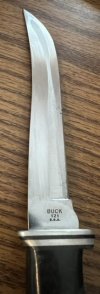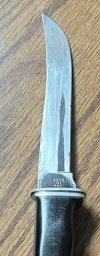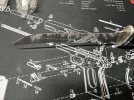- Joined
- Jun 7, 2002
- Messages
- 3,411
So lots of 301 owners have the same issue as I: The blades are too thick at the edge and the hollow grind makes re-profiling tricky. Well, I want to turn my 301 into a box full of scalpels. I'm no stockman or whittler. More of an EDC guy who likes carrying different blades of different strength and sharpness. So, here are the particulars:
1. I want all three blades thinned out and can be sharpened at a low angle for very fine cutting.
2. No blade smiths in my area. I'm no good with power tools but I do free-hand sharpening for different steels. I reckon I can thin out all three blades on the carborundum, or even a 6-inch file. But first question is: what is the better sequence, break the shoulder near the spine first, or the shoulder right at the edge?
3. Thinning out the part where you have the nail nick is tricky. I think I can do that without removing (too much) metal from the upper part that snags one's nail. But in case I screw up, by how much can the upper part of the nick be removed without making it too shallow?
4. From experience, the spey blade is the hardest to thin out. I once tried to free-hand a Japanese knife (Frost?) spey blade and I ended up with something like a doube-edged blade with a round tip. Tips for this one will be appreciated.
Thanks!
1. I want all three blades thinned out and can be sharpened at a low angle for very fine cutting.
2. No blade smiths in my area. I'm no good with power tools but I do free-hand sharpening for different steels. I reckon I can thin out all three blades on the carborundum, or even a 6-inch file. But first question is: what is the better sequence, break the shoulder near the spine first, or the shoulder right at the edge?
3. Thinning out the part where you have the nail nick is tricky. I think I can do that without removing (too much) metal from the upper part that snags one's nail. But in case I screw up, by how much can the upper part of the nick be removed without making it too shallow?
4. From experience, the spey blade is the hardest to thin out. I once tried to free-hand a Japanese knife (Frost?) spey blade and I ended up with something like a doube-edged blade with a round tip. Tips for this one will be appreciated.
Thanks!

